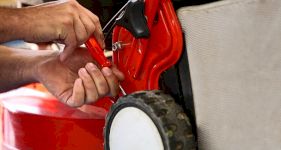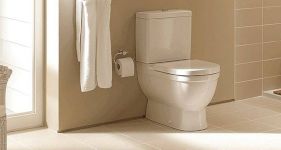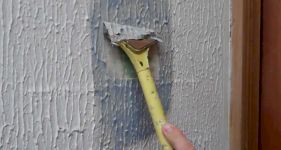Architrave and Skirting Board Fitting Cost
- The average cost to replace skirting boards and architraves is around £250
- Most jobs take 4 to 8 hours to complete
- Skirting board and architrave replacement costs in 2026 by room size and material.
- How long the job takes and what’s typically involved.
- How to find a local carpenter using MyJobQuote
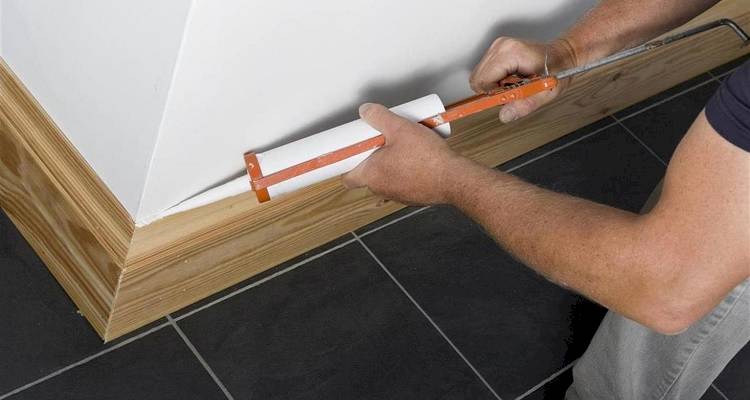
£250
Table of Contents
- How Much To Fit Skirting Boards And Architraves?
- Architrave and Skirting Board Supply Costs
- Skirting Board Installation Costs & Timescales
- Skirting Board Sizes
- Additional Costs to Install Skirting Boards
- What's Involved with Replacing Skirting Boards and Architrave?
- DIY Skirting and Architrave Replacement
- Different Types of Skirting and Architrave
- How to Remove Skirting Boards
- Checklist: Having Your Skirting Boards Replaced
How Much To Fit Skirting Boards And Architraves?
On average, you’re looking at around £250 to replace skirting boards and architraves in a medium-sized room. That includes materials and labour, and most jobs are done within a single day. However, costs can shift depending on a few key factors, such as:
- The type of skirting and architrave used.
- The quality of the materials.
- The size of your room.
- The number of rooms requiring installations.
These elements will all affect the total cost of your project.
When hiring a professional tradesperson to carry out the replacement of your existing skirting and architrave, the cost will usually include the supply of the materials as well as the tradesperson's labour charges.
The scale and complexity of your project will determine the overall cost of manual labour. Of course, the more rooms that require the installation will increase the completion time for the job, thus increasing the cost of labour.
How much would you be willing to pay for having new skirting boards replaced in a single room?
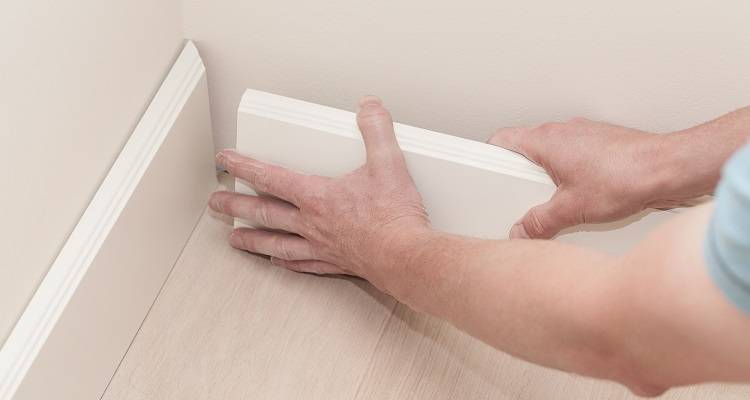
You will also need to decide on what style and quality skirting and architrave you would like installed. More intricate styles of interior mouldings will be more expensive to purchase, therefore affecting the budget of your project.
There are three common types of materials used for interior skirting and architrave:
- MDF
- Softwood
- Hardwood
MDF is the general choice amongst homeowners, as well as being the most affordable option.
MDF skirting boards range from around £8 per length, usually available in 4-meter lengths. MDF skirting and architrave is available in a range of various sizes, thicknesses and designs to choose from.
Want a quick price from local carpenters?
You can get free, no-obligation quotes from carpenters near you through MyJobQuote. It’s the fastest way to find out what your project will really cost.
Can you tell the difference between MDF and wood skirting boards once they're painted?
Architrave and Skirting Board Supply Costs
As we briefly covered earlier, there is a multitude of factors that contribute to the total cost of replacing interior skirting boards and architrave. To help you gain a better understanding, we have included a table below so that you can see how the prices and cost-affecting factors compare.
Please note, the rates below are estimated and should only be used as a guide for pricing your project. The rates below also don't include labour costs.
Cost of Skirting Board Materials
| Skirting Board Material | Cost Per Metre |
|---|---|
| MDF Skirting Boards | £20-£40 |
| Softwood Skirting Board | £25-£50 |
| Hardwood Skirting Board | £30-£60 |
Cost of Architrave Materials
| Architrave Material | Cost Per Metre |
|---|---|
| MDF Architrave | £10-£20 |
| Softwood Architrave | £20-£30 |
| Hardwood Architrave | £25-£35 |
Skirting Board Installation Costs & Timescales
To replace skirting boards and architrave, it usually takes 1 day to complete fully. But this will depend on how much skirting board and architrave you’re replacing and how long any finishing or making good takes.
Labour cost can vary depending on who you choose to complete the work, and the location of your property, but on average you can expect to pay £150-£200 per day for a tradesperson.
Skirting Board Sizes
Skirting boards cover the join where your wall meets the floor and help protect the plaster from kicks, hoovers and everyday knocks. They come in a range of sizes, and what you choose comes down to your room’s proportions and the look you’re going for. The two main dimensions to look at are the height and the thickness of the skirting board.
Standard Heights
Most skirting board styles are available in heights ranging from 70mm to over 200mm.
Let's take a look at the most common choices and what type of room they best fit:
- 70–100mm: Narrow skirting offers a subtle look, ideal for modern homes or rooms with lower ceilings.
- 120–150mm: This is the most common skirting height, suitable for all standard rooms.
- 170mm and above: Taller skirting is often used in period properties or rooms with high ceilings, looking for a traditional design.
Standard Thicknesses
The thickness options for skirting boards are a little more subtle ranging between 15mm to 25mm.
- 15–18mm: Slimmer skirting is great for modern interiors or where space is limited.
- 20–25mm: Chunkier skirting offers a more durable and solid finish, which works well for larger rooms.
Additional Costs to Install Skirting Boards
When replacing architrave and skirting boards, you may need to plaster the walls if the plaster is cracked, crumbling, or you’re already having them re-plastered as part of other work. Depending on how many walls need plastering, you can expect to pay around £120-£300, on average.
You can also install skirting board heating at the same time, which cost from £40 per metre. There are two types to choose from, electric and wet systems. Both systems distribute heat evenly throughout a room.
What's Involved with Replacing Skirting Boards and Architrave?
If you are considering hiring a professional carpenter to remove and install your skirting and architrave, you should first understand the steps involved with the process.
Initial Assessment
Upon visiting your property, a qualified expert will assess and determine the level of service you require.
It is also the ideal time to discuss with your carpenter the options that are available to you so that you can choose the right quality, style and finish of your new skirting and architrave.
Removing Old Skirting Boards and Architrave
On the day of the installation, your carpenter will begin by removing the existing skirting and architrave. This is usually achieved by running a sharp knife between the moulding and the internal wall, breaking the join that holds them together.
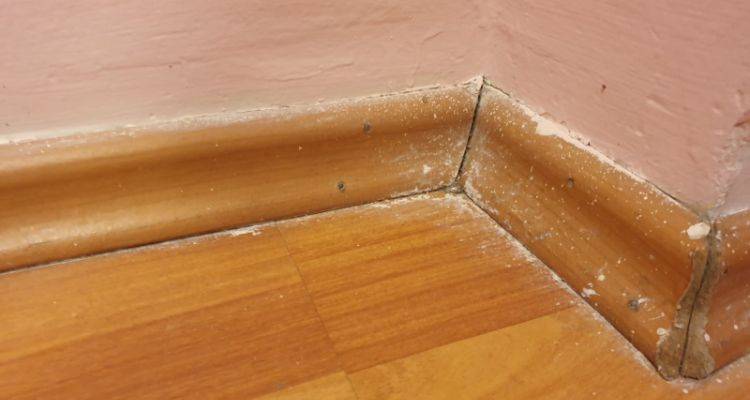
The carpenter will then use either a chisel or a pinch bar to prise out any fixings between the door reveal and the rear of the architrave. Once the architrave is removed, the carpenter will ensure that the space is entirely free of excess nails or fixings, along with any build-up of paint or other debris. If necessary, any build-up of paint or stains can be removed with a paint scraper tool.
A similar process is applied when removing existing skirting boards. However, skirting boards tend to be much thicker than architrave, usually with more substantial fixings that need to be removed.
If this is the case, your carpenter may repeat the process, using a crowbar instead of a chisel.
Fitting the New Skirting and Architrave
Once the area is clean and free of any debris or excess material, your carpenter can begin the process of installing your new interior mouldings.
Your carpenter will measure, cut and mitre the required pieces of skirting and architrave accordingly when installing them. Typically, either a mitre saw or a coping saw will be used to cut the mouldings accurately. A specific type of instant adhesive is a popular method when installing interior mouldings.
Your carpenter may use a combination of adhesive with a nail gun to fit your skirting and architrave in place. This will depend on your tradesperson's preferred style and method of installation, so always be sure to discuss this when hiring a professional.
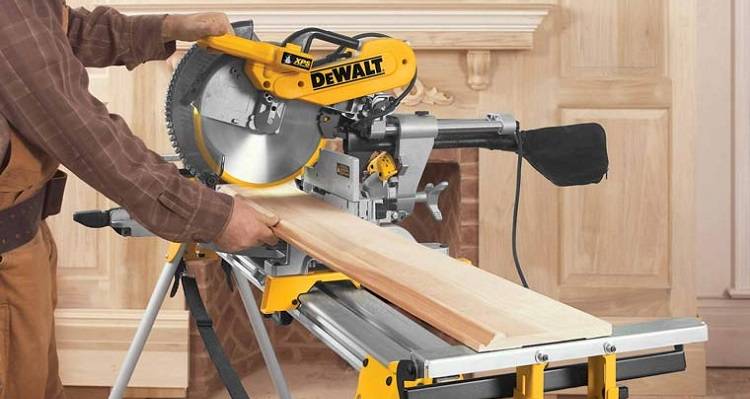
Finishing Touches
Once the new skirting and architrave have been installed, your carpenter will likely finish the project off by applying decorators' caulk to seal any edges and joints between the mouldings to achieve a seamless finish.
They will then be ready to finish as required. You could choose to paint your skirting to match your room's decor, or you could opt for a wood stain for a more natural finish.
How Long Will a Skirting Replacement Job Take?
For a medium-sized, square-shaped room, the process of replacing skirting and architrave should take no longer than 1-2 days to complete.
You may find that your carpenter will spend one day removing the existing mouldings, returning on a second day to reinstall them. Again, this will depend on the carpenter you hire and their preferred method of working.
Still unsure how much your skirting or architrave project might cost? Post your job for free and get real quotes from local professionals — it only takes a minute.
DIY Skirting and Architrave Replacement
As fitting skirting boards and architrave is a relatively straightforward process, you may feel you know how to fit skirting boards efficiently. However, as with any home improvement project, there are risks that you should be aware of when attempting to carry out the work yourself.
To achieve a professional, high-quality finish to your interior mouldings, you will need to equip yourself with the proper tools and materials. Power tools can be hazardous if mishandled or used by someone inexperienced. Not only does this put your health at risk, but you also face causing damage to your property.
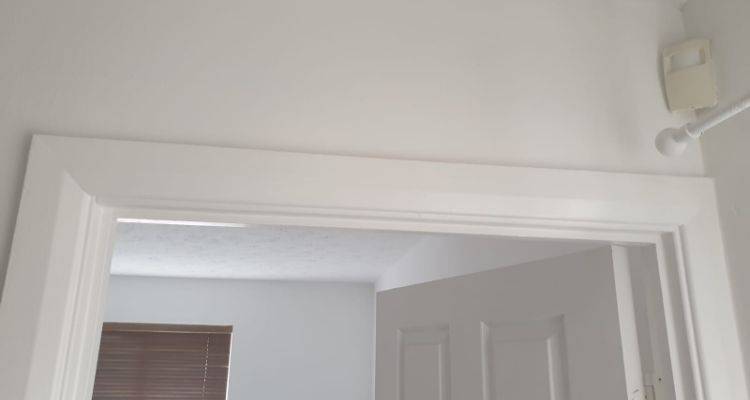
When a professional carpenter carries out the removal of existing interior mouldings, they are working vigilantly to ensure there is minimal damage to the surrounding walls and decor. Removing skirting and architrave can be difficult, so you must be extremely careful not to cause any additional damage when doing so.
You must recognise that carpentry is a profession and requires immense skill and precision to achieve a high-quality finish. If you do not know how to cut and mitre the mouldings properly, you may be left with a poor aesthetic finish, along with wasting costly materials.
Our advice is always to seek the advice or assistance of a qualified, experienced professional who can assist you with your project. In doing so, you will avoid having to pay for any costly repairs and ensure that your installation is of the highest quality finish.
Different Types of Skirting and Architrave
Skirting boards run around the base of your walls, while architrave frames your doors (and sometimes windows), hiding the gap between the wall and the frame. There are a few variations in the materials, style and thickness of both. To pick what will work best in your home, it helps to know the pros and cons of each option.
MDF Skirting Boards and Architraves
The popular material choice amongst homeowners and professionals is MDF interior moulding. There are many benefits of using MDF skirting boards and architraves, such as affordability and longevity of the product.
MDF is generally much cheaper than alternative options like hardwood and softwood, while also being easy to install and low-maintenance. The downside is that MDF is a weaker material compared to solid timber, so it can dent or chip if it’s knocked hard and may swell if it gets damp.
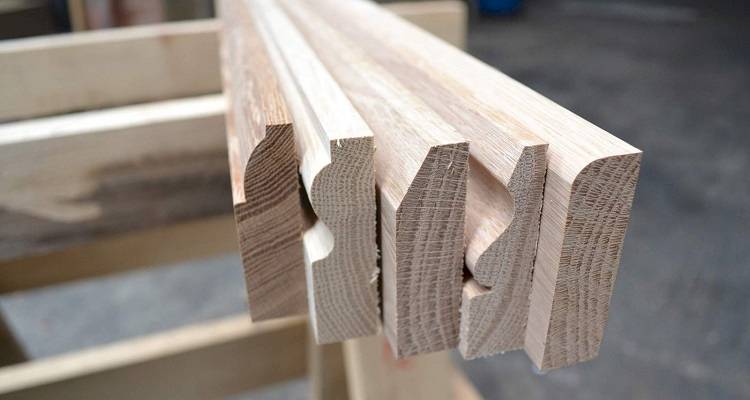
Softwood Skirting Boards and Architraves
Softwoods such as pine are a great middle-ground interior moulding option. Pine mouldings are typically in the same region of cost as MDF and are available in a range of finishes. Pine mouldings often have a variety of more decorative options and styles with more height, perfect for Victorian-style decor.
Softwood mouldings are, however, less durable than hardwood, making them more prone to movement and knocks over time. In busy spaces, they may not last quite as long as hardwood before they start to show wear.
Hardwood Skirting Boards and Architraves
Hardwood such as oak is commonly used for interior skirting boards and architraves. Thanks to its incredible durability, it is more resilient to knocks and scrapes than softwood, making it a low-maintenance choice.
Installing hardwood mouldings can be a bit more involved than fitting MDF or softwood. Carpenters will often pre-drill the timber and use screws and wall plugs or strong grab adhesive to fix them securely. Hardwood mouldings are also more expensive to buy, so consider this when budgeting for your interior project.
For more information, you should discuss with your professional tradesperson which method of interior moulding they suggest would best fit your home and project.
| Skirting Board Material | Size | Supply Cost |
|---|---|---|
| MDF Skirting Boards | 2.4m | £15-£20 |
| Softwood Skirting Board | 2.4m | £20-£30 |
| Hardwood Skirting Board | 2.4m | £30-£40 |
| Architrave Material | Size | Supply Cost |
|---|---|---|
| MDF Architrave | 2.1m | £3-£8 |
| Softwood Architrave | 2.1m | £5-£10 |
| Hardwood Architrave | 2.1m | £15-£20 |
How to Remove Skirting Boards
If you want to remove skirting boards yourself, you need the following tools to hand:
- Stanley knife
- Crowbar
- Pliers
- Claw hammer
- Chisel
Before you start, you need to check for any obstruction, such as wires and pipework. Use a cable and pipe detector if you’re not sure what’s in the wall, and turn off the power if you’re at all unsure. Any surface obstacles should be moved out of the way, but pipes and cables need to be avoided, not removed. To loosen the skirting boards, use the Stanley knife and run it along where the wall meets the skirting. Take the hammer and chisel and gently start to knock the chisel between the skirting and the wall.
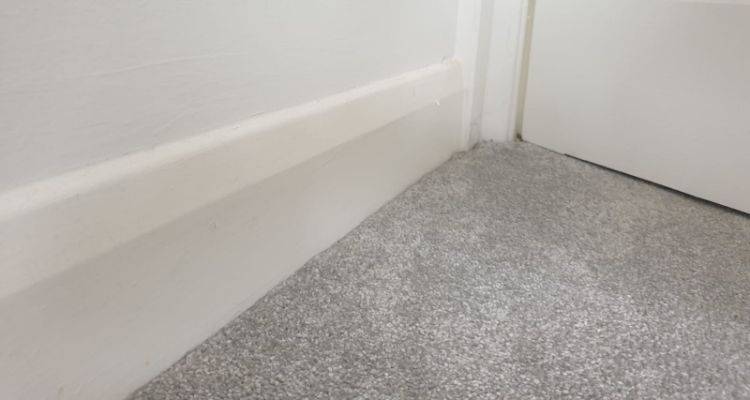
When it’s loose, you can begin to remove it from the wall with the crowbar. Place the crowbar behind the skirting. Once all the nails are out of the wall, you should be able to pull the skirting board away. Make sure to remove any remaining nails that have been left in the wall.
If you want to hire a professional to do this for you, it will cost around £150-£200 per day in labour.
I'm looking for the best adhesive for fixing skirting boards. I don't want to use nails.
Checklist: Having Your Skirting Boards Replaced
Consider these key points before hiring a carpenter for this job:
- Do they fit skirting and architrave often? Ask what sort of work they do most weeks. You want someone who’s used to neat mitre joints and long runs of skirting. Not just the odd bit of carpentry.
- Have you seen examples of related jobs? Keep an eye out for photos of finished skirting and door surrounds rather than only general joinery. Good signs include clean corners, tight joints, and smooth caulking.
- Have you compared a few quotes? You need at least 3 written quotes from various carpenters. And be sure that each covers labour and materials so you’re comparing like for like.
- Is the quote broken down and crystal clear? Ask for an itemised quote that shows things like removal, supply of skirting/architrave, fitting and any final touch ups. This way, you’ll know exactly what you’re paying for.
- Are they insured correctly? Check they have public liability insurance ready. It’s there to protect you if anything gets damaged while they’re working in your home.
- What materials do they recommend and why? Talk through MDF, softwood and hardwood, plus the pros and cons of each. If your carpenter is a good one, they’ll steer you towards the right option for your budget and the look you’re going for.
- Are their reviews decent? Peruse feedback from other homeowners. Pay attention to comments about timekeeping, orderliness and the quality of the finish.





